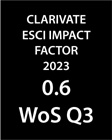The need to renew social representations of urban biodiversity
DOI:
https://doi.org/10.17649/TET.39.1.3578Keywords:
urban green spaces, urban biodiversity, biodiversity and well-being, social representation, human and non-human well-beingAbstract
The biggest challenges of the 21st century are conserving our natural resources, reversing biodiversity loss, and mitigating anthropogenic environmental impacts. Cities have a key role to play in addressing them. Urban sprawl has resulted in the loss of vast natural areas. In parallel, urban nature has become increasingly valued by the local actors (residents, experts, and urban planners), and its complex contribution to human well-being has been explored in recent decades. However, nature’s contributions to people and non-human living creatures are impeded by several factors. This study is based on the assumption that to shape urban green spaces and thus cities in an ecologically valuable and environmentally just way our social representation (shared and socially constructed image) of urban biodiversity needs to berenewed in the planning process.
Establishing a participatory research and a green space planning process, four pillars are presented here based on the literature on urban biodiversity and green spaces to renew the social representation of urban biodiversity: (1) Nature's complex contribution to human well-being is beyond the human scale. Therefore, the urban function of green spaces is complex, offering a wide range of opportunities for urban life beyond the classic urban functions, rich in ecological, and conservational aspects. For instance, recreational and sports functions often take priority over green spaces' ecological functions. (2) Green spaces cannot be considered a homogeneous category, they differ in their biodiversity and contribution to human and non-human well-being. The treatment of 'urban green space' as a homogenous category prevents realizing the ecological functions of biodiverse green spaces and nature’s contributions to people. (3) Ensuring (multiple ways of) local communities' participation can help create and maintain inclusive and diverse green spaces. Community participation could also be an opportunity to move away from the traditional urban functions of green spaces and to pursue a socio-ecological innovation. (4) Involving nature in planning processes requires a shared understanding of how different actors communicate and can lead to diverse, more ecologically sustainable green spaces. The active theming and joint elaboration of the four pillars with experts and local community members can significantly contribute to the natural area’s biodiversity. The pillars are not intended to summarise the characteristics of a "good" green space, but rather to draw attention to the choices that could be considered when planning and conserving/renewing a green space in a city. In each case, the specification and content of these pillars can be achieved in the planning process of the green space in question, which requires a dialogue between participants (including experts and non-experts), and the active interaction of human and non-human stakeholders.
Downloads
Published
How to Cite
Issue
Section
License
Copyright (c) 2025 Juhász Judit, Mihók Barbara

This work is licensed under a Creative Commons Attribution 4.0 International License.
Authors wishing to publish in the journal accept the terms and conditions detailed in the LICENSING TERMS.






